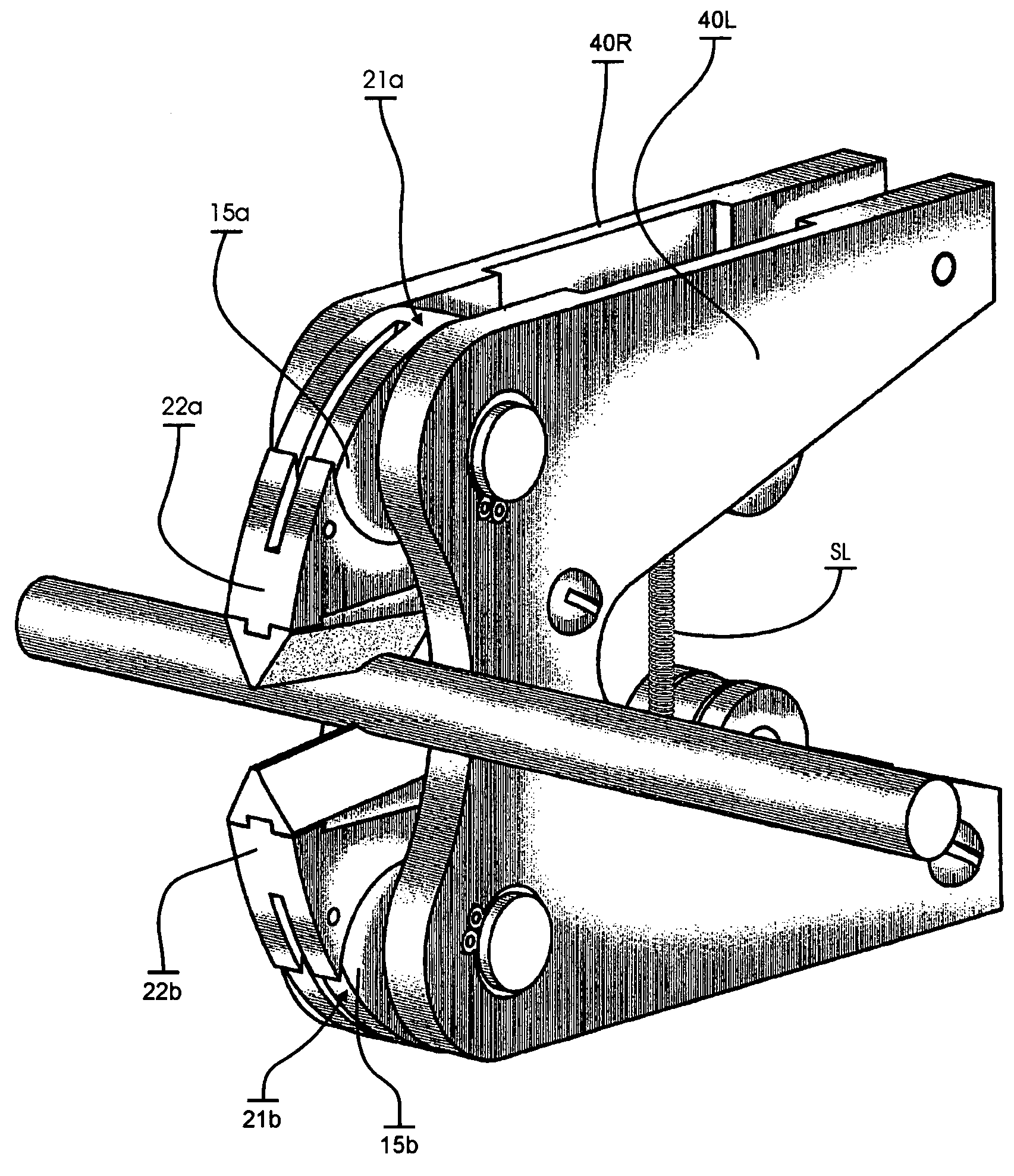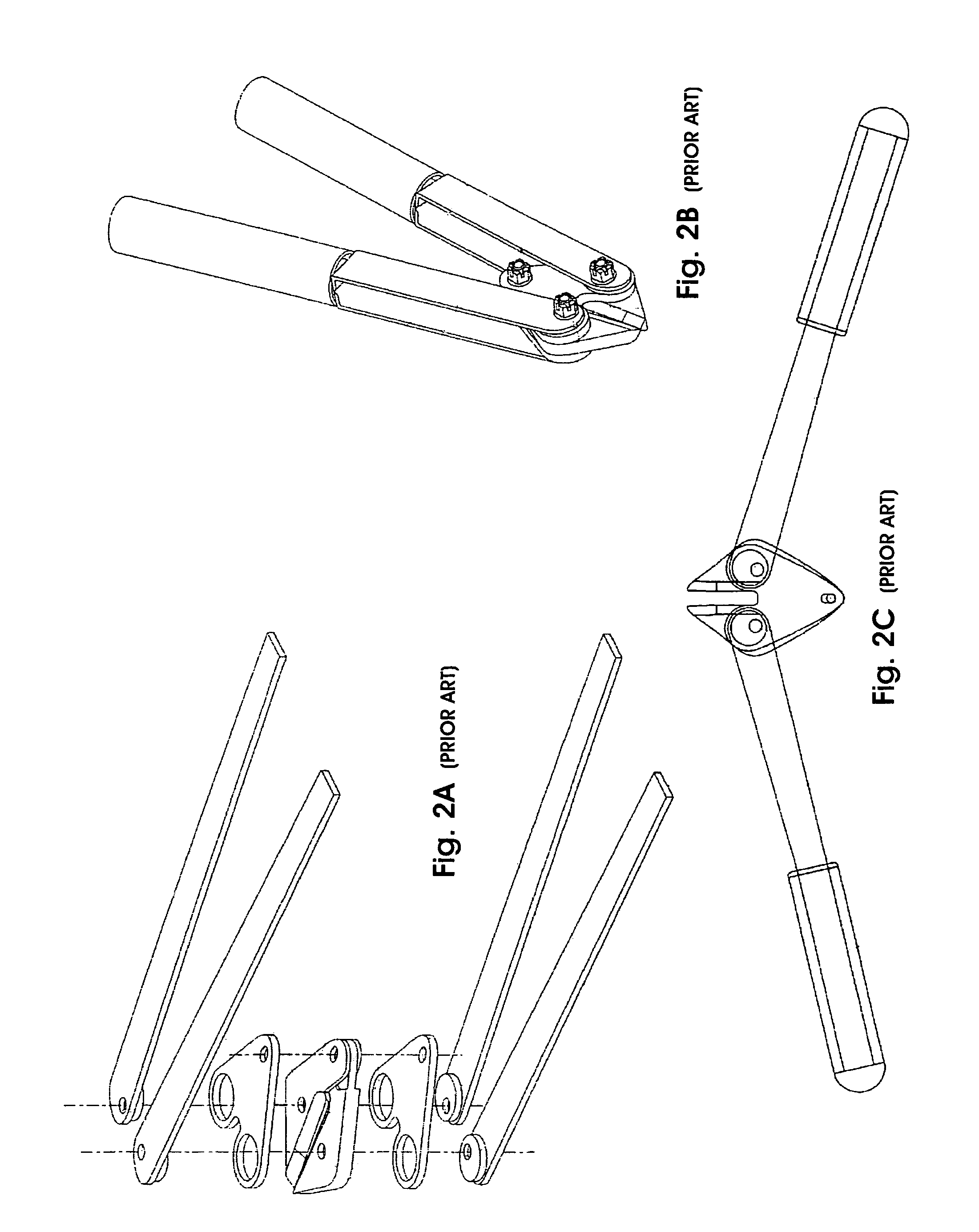Two-stage attachment for cutting, crimping etc, and mechanical method thereof
a two-stage attachment and crimping technology, applied in the field of tools, can solve the problems of many tools designed for a particular task that are limited to one specific function, many tools designed for a particular task do not provide any versatility, and many tools sacrifice the qualities inherent in single-purpose tools
- Summary
- Abstract
- Description
- Claims
- Application Information
AI Technical Summary
Problems solved by technology
Method used
Image
Examples
Embodiment Construction
[0038]Reference will now be made in detail to the preferred embodiments of the present invention, examples of which are illustrated in the accompanying drawings.
[0039]The present invention, in a broad sense, is a two-stage lever arrangement designed to provide a compact device with an improved mechanical advantage to apply a cutting, shearing, squeezing and / or piercing force. The device can be configured for manual or powered operation.
[0040]A segmented eccentrically pivoted cam, as opposed to fully circular or elliptical cam, is used as a part of a lever of a first stage. A working surface of the cam imparts a force to a working surface of another pivoted member, or a blade support, which thus effectively becomes a lever of a second stage. The present invention arranges for two-stage lever action to occur within the same spatial dimensions as those allowing for merely one-stage lever action in conventional tools.
[0041]Means for linking each cam lever to the respective blade support...
PUM
| Property | Measurement | Unit |
|---|---|---|
| angle | aaaaa | aaaaa |
| angle | aaaaa | aaaaa |
| length | aaaaa | aaaaa |
Abstract
Description
Claims
Application Information
 Login to View More
Login to View More - R&D
- Intellectual Property
- Life Sciences
- Materials
- Tech Scout
- Unparalleled Data Quality
- Higher Quality Content
- 60% Fewer Hallucinations
Browse by: Latest US Patents, China's latest patents, Technical Efficacy Thesaurus, Application Domain, Technology Topic, Popular Technical Reports.
© 2025 PatSnap. All rights reserved.Legal|Privacy policy|Modern Slavery Act Transparency Statement|Sitemap|About US| Contact US: help@patsnap.com



